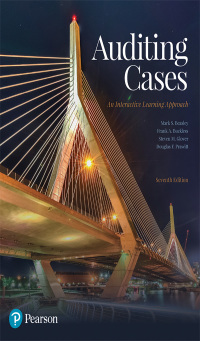On January 24, 2008, Socit Gnrale, Frances second largest bank announced the largest trading loss in history,
Question:
On January 24, 2008, Société Générale, France’s second largest bank announced the largest trading loss in history, a staggering 4.9 billion Euro ($7.2 billion U.S.), which it blamed on a single rogue trader. The trader, Jérôme Kerviel, worked at what Société Générale considered a low-level, low-risk trading desk. The announcement sent a shock wave through the global financial services community and immediately triggered memories of a another rogue trader, Nick Leeson, who, 13 years earlier, single-handedly bankrupted the 233-year old Barings Bank of London.
REQUIRED
[1] The term “tone at the top” is typically associated with a firm’s control environment. How would you characterize Société Générale’s tone at the top and what effect do you believe that had on oversight at the trading-desk level?
[2] Using auditing standards or your textbook, define the following control-related terms:
[a] Control environment
[b] Segregation of duties
[c] Restricted access
[d] Preventative and detective controls
[e] Design and operating effectiveness
[3] In an independent audit of the financial statements of a large bank, why do auditors typically follow a controls reliance strategy (i.e., obtaining some audit assurance via controls testing)? In the case of Société Générale, do you believe the external auditors gathered much controls-related evidence regarding the Delta One trading desk? Why or why not?
[4] Fraud research indicates three conditions must exist before a fraud occurs: Pressure/Incentive, Rationalization, and Opportunity.
[a] What do you think were Jérôme Kerviel’s incentives and rationalizations for committing fraud?
[b] What created the opportunity for fraud?
[5] What are the advantages and disadvantages of promoting personnel across functional areas within a company (e.g., from risk and controls to operations)?
[6] The loss from Kerviel’s rogue trading resulted in a loss many times greater than audit materiality. The external auditor did not discover the misstatement. Was this an audit failure? Conduct internet research to determine if the external auditors, Ernst & Young Audit and Deloitte & Associés, were named in lawsuits associated with the loss due to the trading fraud.
Step by Step Answer:

Auditing Cases An Interactive Learning Approach
ISBN: 9780134421827
7th Edition
Authors: Mark S Beasley, Frank A. Buckless, Steven M. Glover, Douglas F Prawitt





